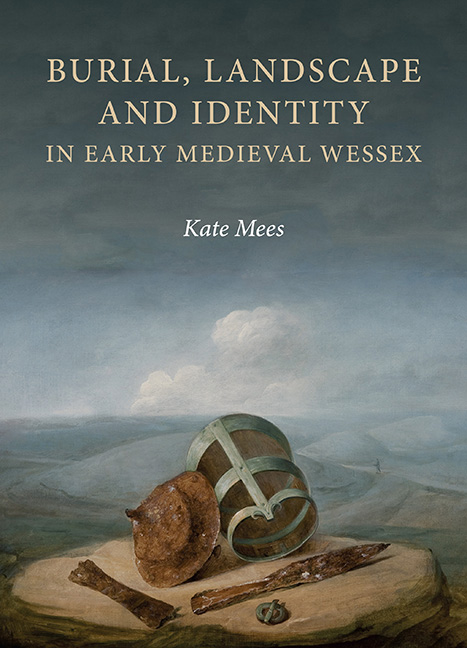Book contents
- Frontmatter
- Dedication
- Contents
- List of Illustrations
- Acknowledgements
- List of Abbreviations
- Note on Period Terminology and Other Definitions
- Introduction: Perspectives, Approaches and Context
- 1 Monument Reuse and the Inherited Landscape
- 2 Topography and Ritual Life
- 3 ‘Britons and Saxons’?
- 4 Land Use, Territoriality and Social Change
- 5 The Church and the Funerary Landscape
- Conclusions
- Appendix: Gazetteer of burial sites in the study area, c. AD 450–850
- Bibliography
- Index
- Anglo-Saxon Studies
2 - Topography and Ritual Life
Published online by Cambridge University Press: 24 October 2019
- Frontmatter
- Dedication
- Contents
- List of Illustrations
- Acknowledgements
- List of Abbreviations
- Note on Period Terminology and Other Definitions
- Introduction: Perspectives, Approaches and Context
- 1 Monument Reuse and the Inherited Landscape
- 2 Topography and Ritual Life
- 3 ‘Britons and Saxons’?
- 4 Land Use, Territoriality and Social Change
- 5 The Church and the Funerary Landscape
- Conclusions
- Appendix: Gazetteer of burial sites in the study area, c. AD 450–850
- Bibliography
- Index
- Anglo-Saxon Studies
Summary
The landscape of early medieval Wessex was replete with the material remains of past societies. This was particularly true of the chalk downland, upon which the marks of ancient farmers and monument builders remained at their most visually striking and profuse. As outlined in the previous chapter, communities seemingly gravitated towards these landmarks, actively reusing and repurposing them in a variety of novel ways. These sites provided tangible links to place, to past and present social practices, to important individuals and events. Yet how far the inhabitants of early medieval Wessex could have been aware of the precise origins and relative chronologies of monuments is questionable. Could they have known, without the archaeological knowledge we possess today, that a Roman enclosure was of more recent construction than a Bronze Age barrow, for instance? The same question could be asked of ‘curated’ objects deposited within graves: is there any way a sixth-century ‘collector’ of Roman coins could have been aware, for example, that a radiate of Postumus was of greater antiquity than a nummus of Theodosius I? Did they in fact recognise these artefacts and monumental constructions as ancient at all? We might argue that none of this really matters, if we suppose that these remnants of the past had already accrued complex biographies that transcended their original functions and meanings. Just as grave-goods arguably formed part of carefully selected mnemonic assemblages, monuments did not exist in isolation and it is reasonable to postulate that the overall character of the landscape – composed of palimpsests of natural and cultural elements – was more important than the individual constructions within it. Natural features and anthropogenic creations combined to create something altogether more powerful.
This chapter explores the topographical setting of burial sites, and what this can tell us about the ritual significance particular locations held for early medieval communities, in terms of both their physical attributes and the cultural imprints already left upon them. The focus is on the pre-Christian rather than post-conversion evidence, while recognising the problems inherent in this distinction. How Early Anglo-Saxon ritual and religion can be defined is an enduring question. The much later composition of any written sources documenting paganism in Anglo-Saxon England creates a distorted picture. And, while the archaeological evidence is at least contemporary, it is nonetheless ‘partial, allusive, coded and equivocal’, reflecting only selective materialised expressions of beliefs.
- Type
- Chapter
- Information
- Burial, Landscape and Identity in Early Medieval Wessex , pp. 55 - 98Publisher: Boydell & BrewerPrint publication year: 2019



